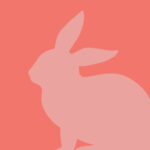
DOMESTIC RABBIT
More than half of the world’s rabbits live in North America, many starting out as Easter gifts in the spring. They can make great pets if proper care and husbandry is provided.
PROFILE
All of our bunnies were donated by good samaritans or schools. For us to accept a donated rabbit, the owners have to sign donation paperwork and pay a $75 adoption fee, which will cover the rabbit’s spay or neuter.
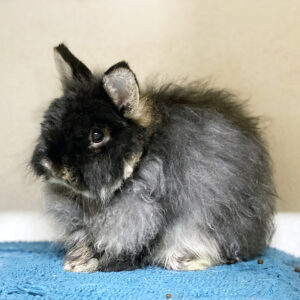
ARCHIE
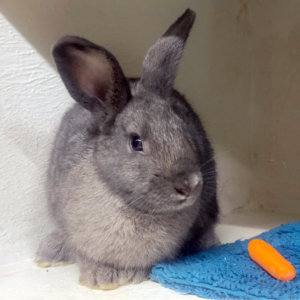
ASH
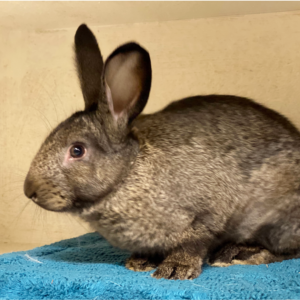
BAGEL
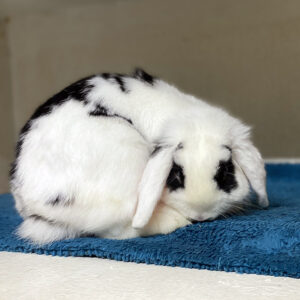
BUNS
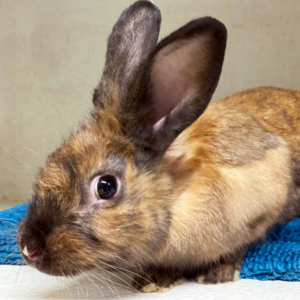
CARAMEL APPLE
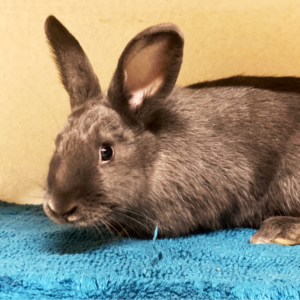
CHARCOAL
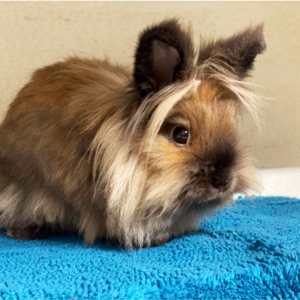
CHARLIE BROWN
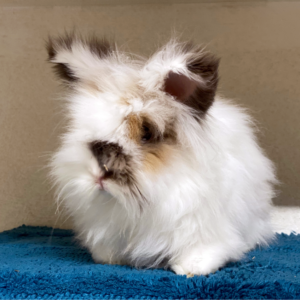
CINNABUN
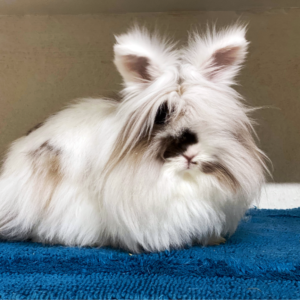
DAISY
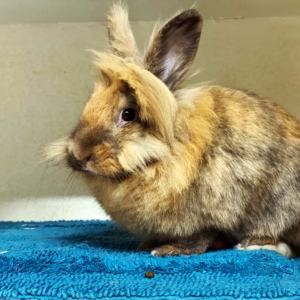
ELVIS
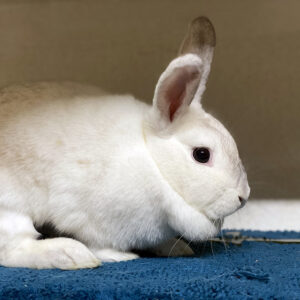
JESSICA
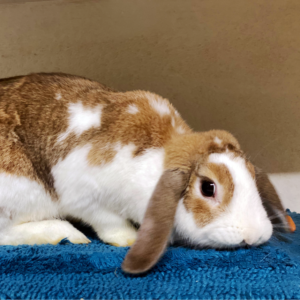
MUFFIN
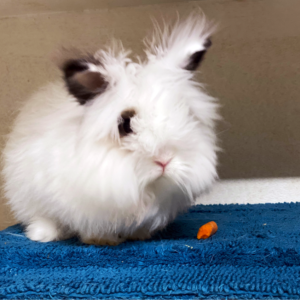
PEPPER
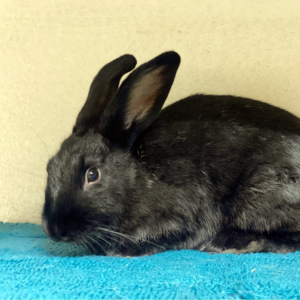
SALEM
OVERVIEW
CONSERVATION STATUS
Not Listed
AVERAGE SIZE
Compared to a 6′ Man
AVERAGE WEIGHT
avg. 3 – 8 lbs
AVERAGE LIFESPAN
9 Years
DIET
Herbivore
REGIONS
Europe
Almost all domestic rabbits originated from European wild rabbits, which are currently labeled as Endangered in their native region. Their natural range is confined to the Iberian peninsula and small areas of France and northwest Africa, but due to human interaction, they are found on every continent except Asia and Antarctica. They prefer dry areas near sea level with soft, sandy soil. The soil preference is so they can burrow into it. Hundreds of domestic rabbit breeds can now be found around the world. Some are kept in outdoor hutches or enclosures and, since gaining popularity in the 1980’s, some rabbits have even been litter trained and kept indoors as house pets.
APPEARANCE
Over 305 breeds of domestic rabbits are recognized across the globe. This provides a broad variety of fur colors, patterns, lengths, and overall sizes. Most average 3 to 8 pounds but depending on the variety, can be as little as 2 pounds and as much as 20 pounds! Four types of fur exist: Normal, Rex, Satin, and Angora. Their eyes may be brown, blue-gray, blue, marbled, or pink. All rabbits have slender, thin-skinned ears – some longer than others – that can turn independently, lie back flat, or be held erect. Their signature noses and long whiskers are almost always twitching. Tails are typically small tufts of fur, and hind legs are generally large and powerful. Many people believe that rabbits only have large front teeth that are easily seen, but they actually have a total of 28 teeth. Their incisors (front teeth) require special care as they continuously grow. In the wild, their natural diet helps keep them stay filed down. If allowed to become too long, the teeth require filing or trimming. Rabbits do not have pads on their feet like most mammals but instead have thick layers of fur on the bottom of their feet.
CHARACTERISTICS
A male rabbit is known as a buck, a female is a doe, and a young rabbit is a kit, or kitten. A group is known as a colony or nest. Females give birth to litters ranging from 4 to 12 kits and does can become pregnant again as early as 1 day after giving birth.
Since the majority of a rabbit’s diet is made up of grasses and weeds, which are very high in cellulose, the food they eat is difficult to digest. Unlike a cow that chews the cud, rabbits re-ingest some of their own droppings to further digest their food and extract sufficient nutrients.
Rabbits are very quiet and communicate in subtle ways. They will clench their facial muscles and change their body position when they are feeling worried. Rabbits are delicate animals and need to be handled with care. Along with excellent hearing, rabbits have almost 360-degree vision, but they are born with their eyes shut and are actually farsighted. This means when they see you approaching or bending over them to pet them or pick them up, you may appear as a threat causing them to dart away. If you do manage to hold them, your hands and fingers may feel like the claws or talons of a predator, which may make the rabbit wiggle and try to break free. Sitting calmly and letting them approach you is a great way to interact with a rabbit.


